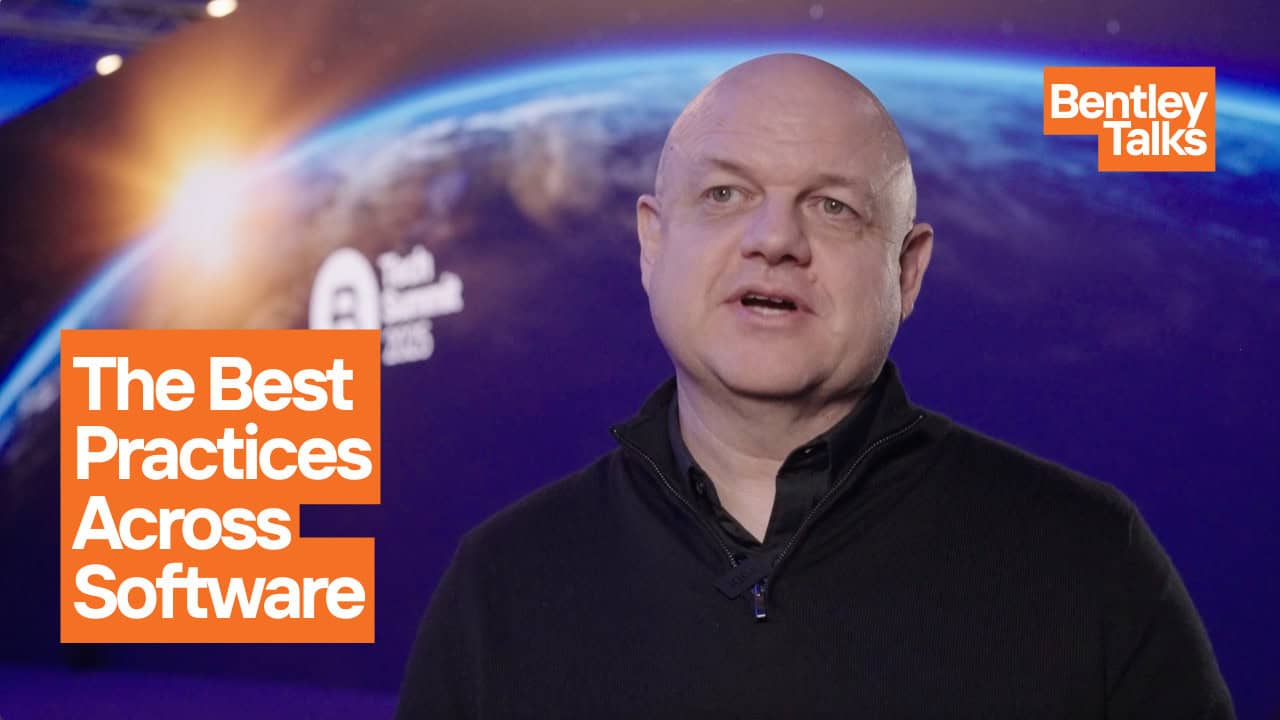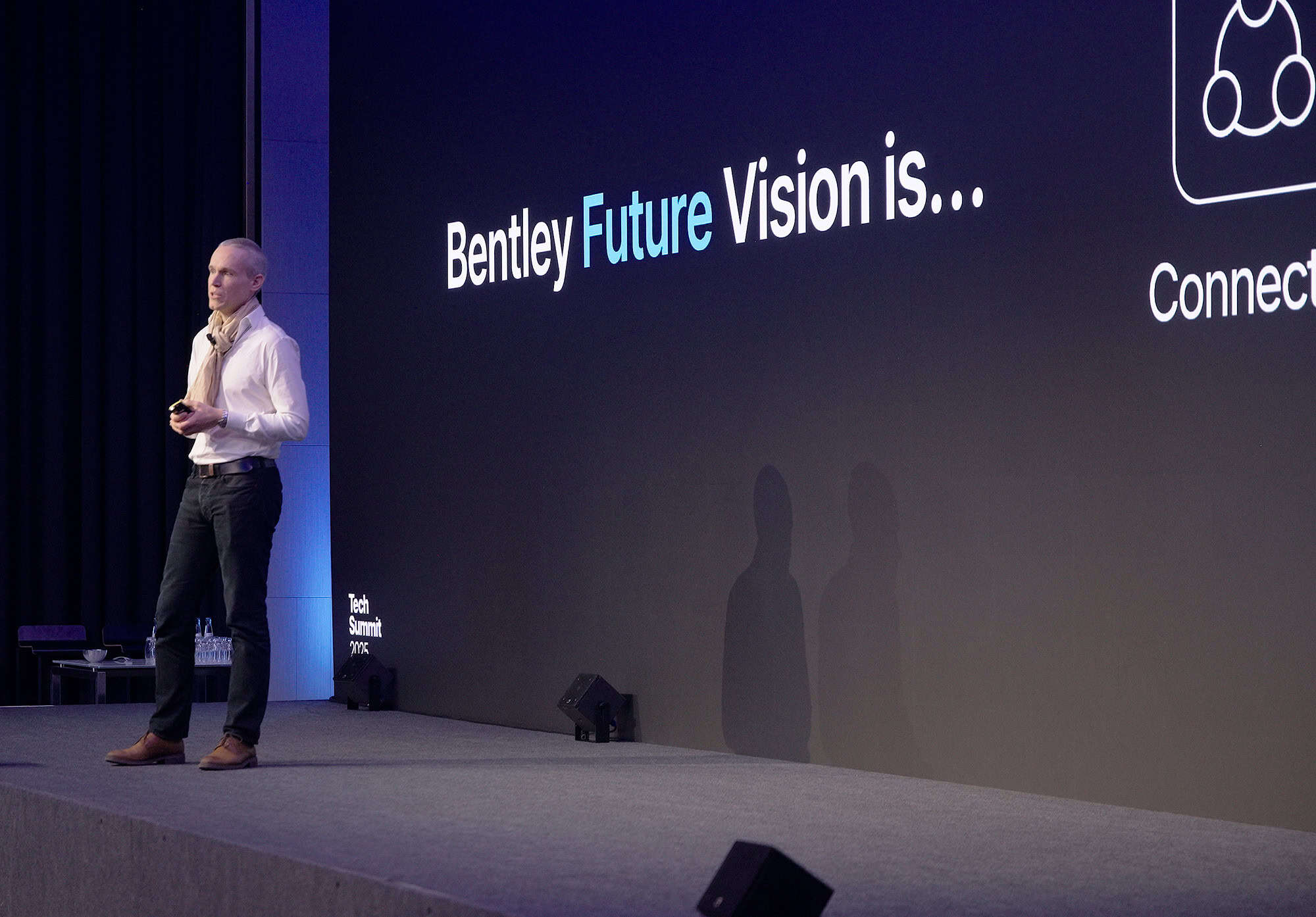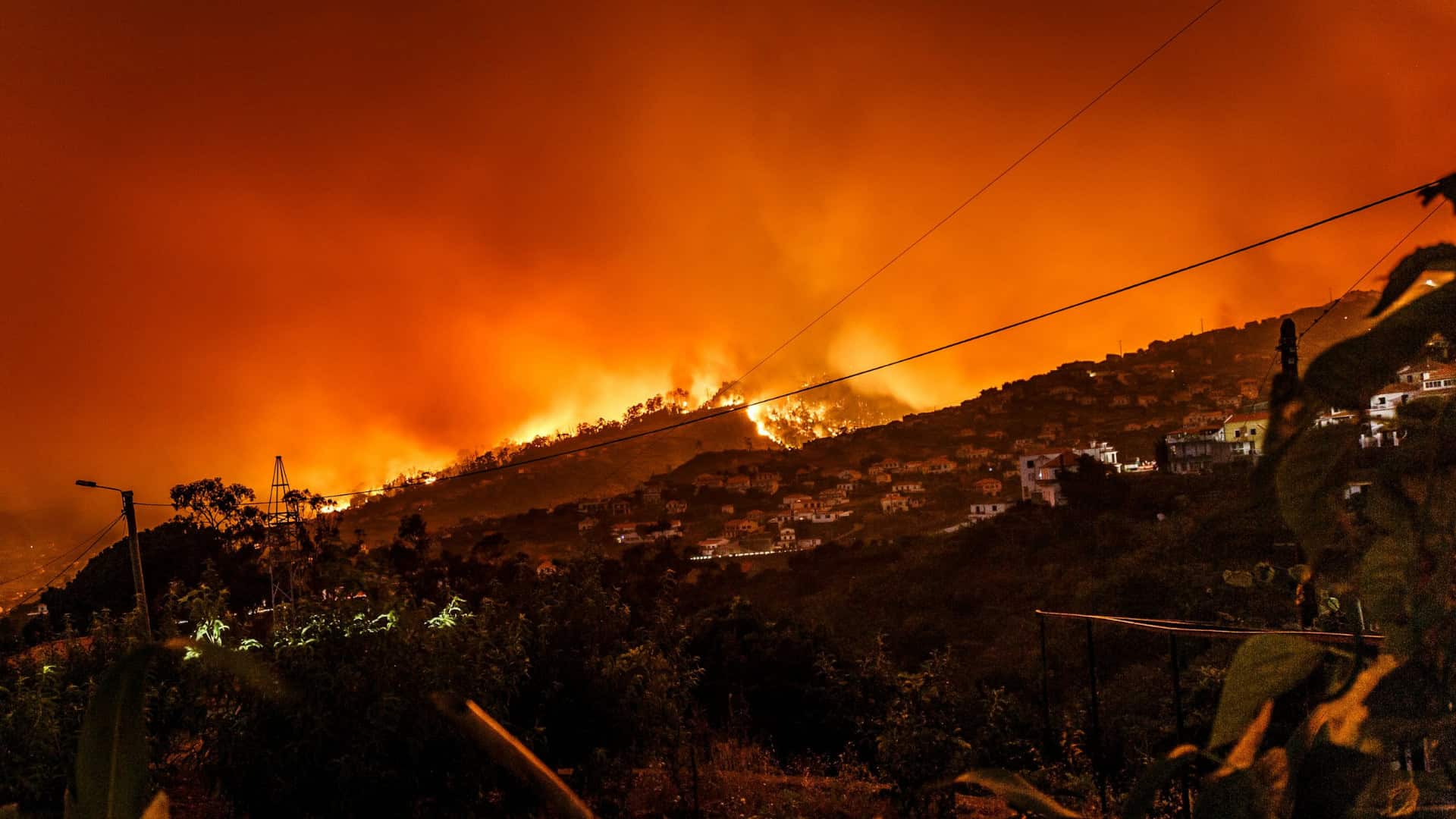We’re only halfway through 2025, yet we’ve already brought you stories from around the world about how AI and digital twins are transforming the way we design, build, and maintain the infrastructure around us. From flood-proofing the bustling streets of New Orleans to helping firefighters work faster and safer in Dublin, here are 10 of the most powerful stories we’ve brought to you so far this year on our blog, Bentley Insights & Inspirations.
Protecting The Big Easy
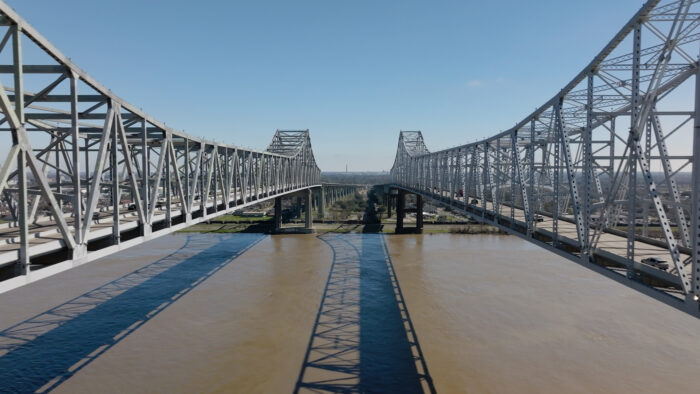 The Crescent City Connector bridge over the Mississippi river in New Orleans, Louisiana.
The Crescent City Connector bridge over the Mississippi river in New Orleans, Louisiana.Revelers taking in New Orleans’ famed Mardi Gras parades may not know that the streets hosting the boisterous celebrations are near or below sea level, in a city surrounded by water. Keeping everyone dry – from floodwater, at least – is a marvel of U.S. infrastructure. The city known as the Big Easy is ringed by a system of levees, floodgates, pump stations, spillways and other infrastructure that keep residents and visitors safe.
One key component is the giant 17th Canal Pump Station, which takes water from a canal that drains New Orleans and dumps it into a lake north of the city. Now, that pump station has a digital twin, built using software developed by Bentley Systems. Joey Coco, president and CEO of a Louisiana engineering firm involved in the project, says many more pieces of infrastructure along the Mississippi River could be digitized in the future, a prospect that would help engineers build, maintain, and operate flooding safeguards.
A Digital Twin of The World’s Tallest Building
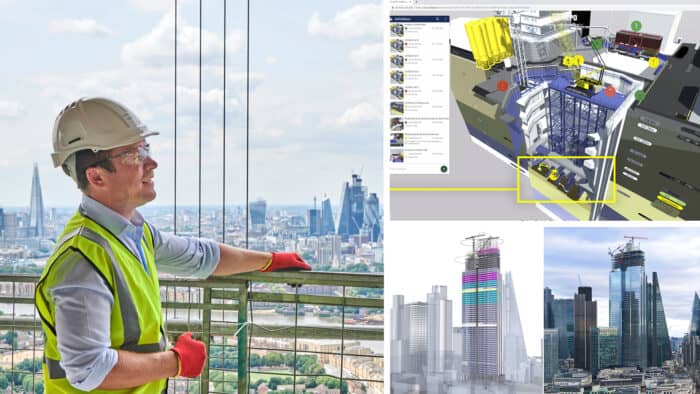
Bowles is using Bentley’s SYNCHRO software to visualize the steps required to build the 1-kilometer-tall tower. The software allows teams to digitally rehearse every step of the construction process – every crane lift, concrete pour, and steel placement – before it happens on site. This is critical for efficiency as well as safety. By identifying risks in the virtual model, the team can plan around potential hazards and component “clashes,” reducing the chances of rework and delays.
When Jeff met Serelle: An Infrastructure Love Story
 Renderining of the EchoWater project area. Credit: Regional San/Project Controls Cubed
Renderining of the EchoWater project area. Credit: Regional San/Project Controls CubedWhen Serelle Corn and Jeff Campbell started their company 15 years ago, not everyone in the infrastructure industry was ready to believe in the transformative power of digital tools. So the married founders of Project Controls Cubed (PC3) went to extraordinary lengths to show how digital technology could boost collaboration, slash waste, and cut costs to the tune of hundreds of millions of dollars. Working around the clock and on their own dime, the couple built a full 5D model of a major wastewater treatment facility – and soon won work on the nearly $2 billion EchoWater upgrade project in California. It was a vindication for PC3’s “5D approach,” which just like the Jeddah Tower uses Bentley Systems’ SYNCHRO software platform to combine 3D design models with schedule (4D) and cost (5D) data to show cost savings over time.
The New Gold Rush: How Digital Tools and AI Are Reviving Abandoned Mines

That’s where Seequent, Bentley’s subsurface company, and its industry-leading software come in. Mining teams are turning to Seequent’s newly launched Evo, a cloud platform that connects data, teams, and tools in a single collaborative environment. Evo’s accurate modeling isn’t just good for the bottom line – it’s essential for sustainability. “If you can move less rock for more gold, it’s not only cheaper, it’s less environmentally damaging,” says Seequent geologist David Newton.
A 19th Century Tunnel Meets 21st Century Tech
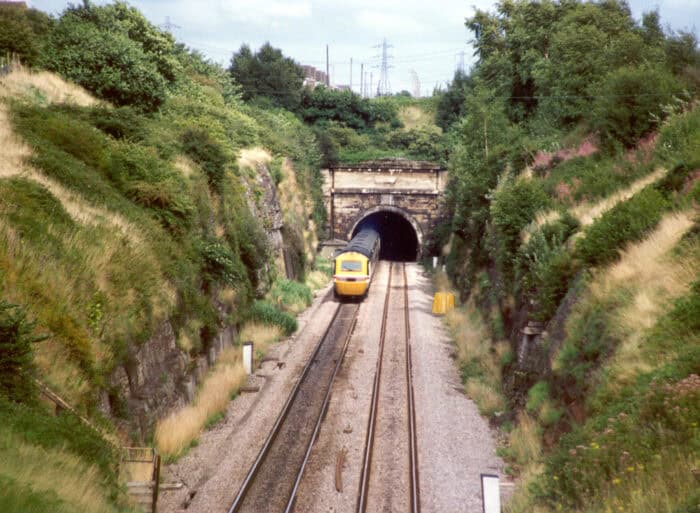 The Severn Tunnel
The Severn TunnelSome 150 years ago, Victorian engineers completed one of Britain’s most audacious engineering projects: the Severn Tunnel, connecting the west of England to south Wales. Thanks to its famously damp and dark interior, the tunnel has long been difficult to inspect, maintain, or even visualize. Plus, maintenance is costly because it requires shutting down the busy rail line. But with the help of Bentley’s cutting-edge technology, this historic tunnel now has a digital twin: a 3D digital replica hosted in the cloud. Built in Bentley’s ProjectWise software, the digital twin is allowing engineers to explore and analyze the tunnel without stepping inside.
Along with high-tech data like point-cloud LiDAR scans and train-borne survey results, the team in at Network Rail, which operates and maintains the tunnel, also relied on history. They built the digital twin with the help of historical engineering drawings from Sir John Hawkshaw, the tunnel’s original chief engineer in the 1870s.
Dublin Fire Brigade Blazes a Trail for Digital Twins in Emergency Response
 Digital Twin for Emergency Response, also known as DTER, aims to reduce pre-incident planning time for firefighting.
Digital Twin for Emergency Response, also known as DTER, aims to reduce pre-incident planning time for firefighting.Gathering data at the Dublin Fire Brigade has come a long way since Dennis Keeley joined in the 1980s. Back then, paper records of emergency calls were impaled on a 6-inch nail. These days, Keeley is Dublin’s fire chief and leading a digital twin project – using Bentley’s iTwin platform – that promises to make the city’s emergency response safer, smarter, and faster.
Digital Twin for Emergency Response is a cloud-based virtual model of Dublin’s urban landscape that brings together data, on everything from building layouts to fire hydrant locations, into one easy-to-use interface. With critical information instantly available to firefighters, the system promises to save critical time and enhance safety for both firefighters and the communities they serve.
Smart Heat: Digital twin helps college town move toward carbon neutrality. Are big cities next?
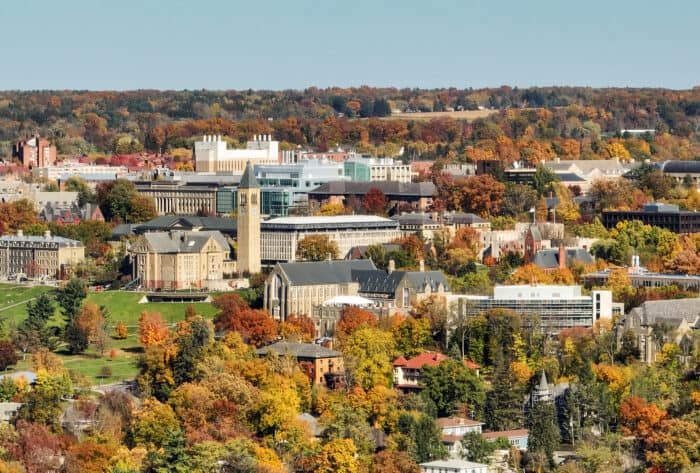 Cornell University in Ithaca, NY.
Cornell University in Ithaca, NY.Known for its natural beauty in upstate New York, Ithaca is also home to Cornell University and groundbreaking research. The city is now aiming to become a national model for urban decarbonization. Ithaca plans to electrify all 5,500 of its buildings by replacing gas-powered systems with heat pumps and induction stoves, with a goal of carbon neutrality by 2030. At the heart of the effort is a digital twin: a virtual model developed by Cornell researchers and the Rocky Mountain Institute.
The digital twin uses Bentley tools that can accurately reconstruct 2D images in 3D, all the way down to the position and depth of an individual window frame. This level of detail is important because the Ithaca team aims to first retrofit the least energy-efficient buildings, like those leaking heat through their windows.
Building The Digital Twin of the World’s Most Complex Machine
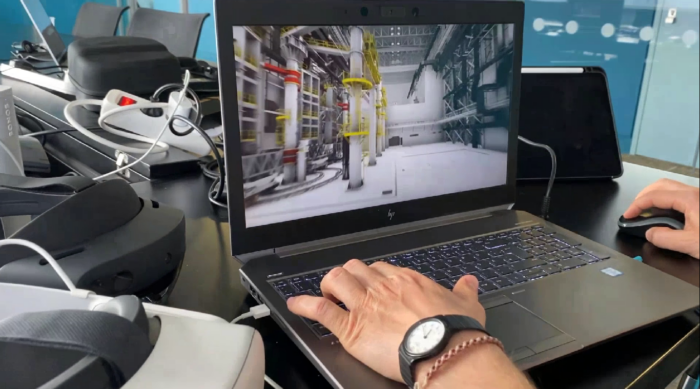 A 3D rendering for planning the design and construction of ITER project displays on laptop screen.
A 3D rendering for planning the design and construction of ITER project displays on laptop screen.Clarity and precision are key when you’re building the world’s largest fusion reactor, an ambitious experiment that could one day replicate and harness the power of the sun. That’s why Bentley’s digital twin and 4D planning tools have become essential at the International Thermonuclear Experimental Reactor (ITER) in France.
These tools give engineers greater clarity and foresight as they simulate, refine, and execute the reactor’s construction process. Soon, the tools will enable teams to navigate a virtual model of the highly complex engineering gem that’s at the heart of ITER: its giant tokamak, a donut-shaped chamber built to contain plasma heated to hundreds of millions of degrees.
How Bentley and Google are Transforming Roadway Maintenance and Disaster Recovery
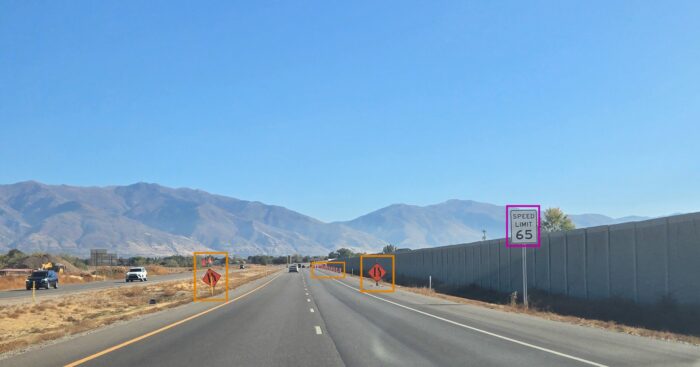 Blyncsy’s technology can be used to detect over 40 different road conditions and asset inventory issues.
Blyncsy’s technology can be used to detect over 40 different road conditions and asset inventory issues.A groundbreaking collaboration between Bentley and Google promises to transform the way we maintain our roadways and recover from disasters. The partnership brings together Blyncsy, a Bentley company, with Google Maps. Blyncsy applies AI to crowdsourced dash-camera imagery to detect damage to roadway assets, such as malfunctioning streetlights and downed street signs.
The new capabilities integrate Google’s continuously updated mapping data into Blyncsy, including visuals from Google Street View, to spot everyday problems like potholes and more serious infrastructure risks caused by disasters. The new capabilities, unveiled at Google Cloud Next in April, can help streamline damage evaluations after a disaster and speed up recovery – saving both time and money.
New Pope, Ancient Basilica: How a Digital Twin Helps Protect the Vatican’s Majestic Church
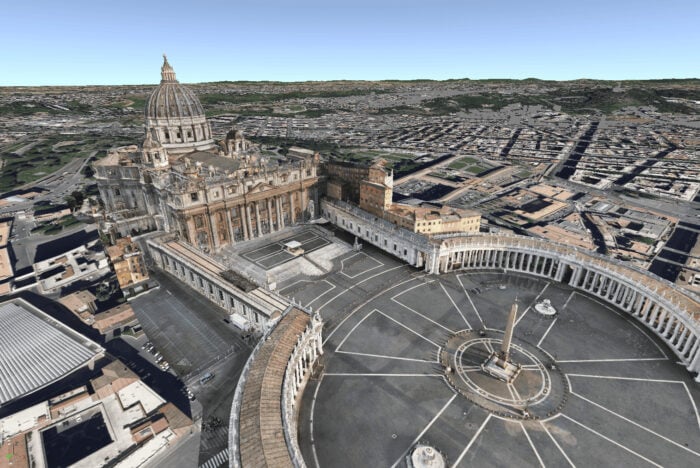 The St. Peter’s Basilica digital twin captures extraordinary detail of the structure’s exterior, the Square, and surrounding landscape. Courtesy of Italferr and Italdron Air Services.
The St. Peter’s Basilica digital twin captures extraordinary detail of the structure’s exterior, the Square, and surrounding landscape. Courtesy of Italferr and Italdron Air Services.When newly elected Pope Leo XIV appeared in front of jubilant crowds at the Vatican in early May, he greeted them from the balcony of one of the world’s most iconic churches: St Peter’s Basilica. This magnificent cathedral, completed almost 400 years ago, now has a decidedly 21st century innovation: a digital twin, or virtual 3D replica, created by Italian engineering firm Italferr, with the help of software from Bentley.
The model allows users to “ascend” into the Basilica’s dome or to zoom in on a masterpiece of Italian architecture or art, such as Michelangelo’s marble La Pieta. But the project’s main application will be to help maintain and preserve this unique piece of religious and cultural heritage for centuries to come.
Surveying the Basilica posed a major challenge. Teams needed to safely capture its priceless interior, where conventional drones might cause damage. The solution: an airship made up of a helium balloon as tall as a person, carrying reality-capture systems.
Kathleen Moore is a seasoned journalist, editor and educator. Most recently, she led a 50-strong team of journalists covering Central and Eastern Europe and Eurasia.


